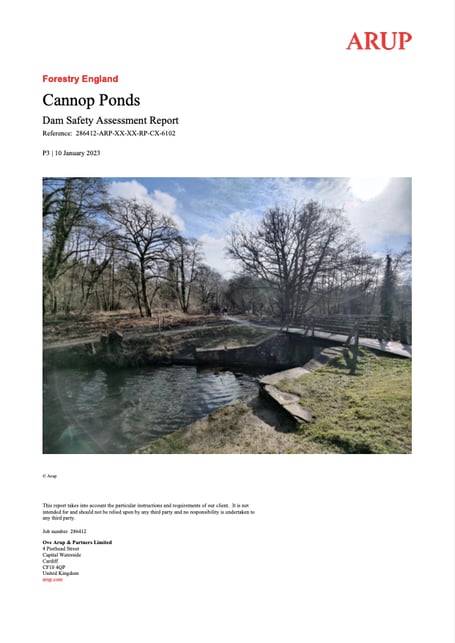FORESTRY England has released a report on the condition of the dams at Cannop Ponds ahead of further investigation in the spring.
It says the Dam Safety Assessment has been written in response to frustrations from the public about national protocol that required it to edit out details of the independent reservoir inspection reports.
The new report "provides the facts, while omitting the sensitive information Forestry England was unable to share."
The assessment was carried out by engineers Arup and the report is dated January 10. It was released today (Thursday, January 19)
The assessment found two major problems with the dams: both spillways have structural weaknesses and that, in the event of a flood, both could "overtop", triggering a collapse that could have catastrophic consequences for nearby Whitecroft and Parkend and cause flooding in Lydney.
The Reservoirs Act sets out the scale of a flood event that a dam must be able to safely cope with – Upper Cannop is category ‘B’ , which means it must be able to withstand a 1 in 1,000-year flood. while the category C Lower Cannopmust withstand a 1 in 150-year flood.
These flood events do not represent timeframes butare ways of measuring the severity, with the higher the number being the greater severity flood.
Neither spillway could currently cope with a 1 in a 150-year event so both dams require new, larger, stronger and far wider spillways to be constructed.
The construction of the new spillways will require the ponds to be completely or at least partially drained.
Kevin Stannard, Deputy Surveyor of the Forest of Dean, said: “The Forest of Dean experienced a 1 in a 130-year event in December 2020, which led to the highest flow recorded on the Cannop Brook. With our changing climate, it isn’t a question of if we will experience a 1 in a 150-year event, but when. We cannot allow the dams at Cannop to fail.”
As part of the ongoing survey work, this spring, ground investigations will take place at Cannop Ponds.
Mr Stannard, the most senior official in the Forest, added: “The ground investigation work will be carried out with a range of techniques and equipment, including some very large drilling rigs.
"I need to reassure the community that this is not the start of works to remove or replace the dams. The investigations will provide more accurate and detailed information on how the dams and spillways were built, what materials were used, and what condition the structures are in.
"This will allow us to better understand the history and make-up of the dams.
"Our current knowledge is based on visual inspection of the surfaces and known history of previous collapses and repairs. We are now carrying out this necessary work to test our assumptions and increase our knowledge of the structures.”
The nature of the works means, for a time, access across the dams at Upper and Lower Cannop may be restricted for safety reasons. Full details of any diversions or footpath closures will be shared nearer the time.
The ponds were created in the early 19th century to supply water to the Parkend Ironworks.
Keep up to date with the project www.forestryengland.uk/article/the-future-cannop-ponds

.jpeg?width=209&height=140&crop=209:145,smart&quality=75)



Comments
This article has no comments yet. Be the first to leave a comment.